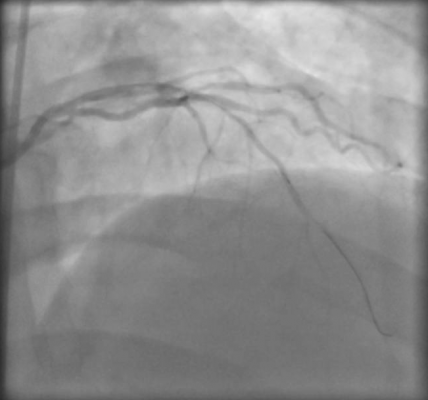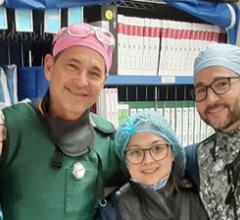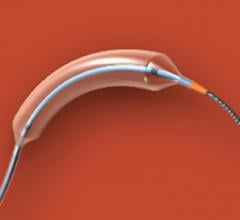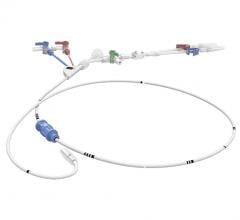
November 24, 2015 — The U.S. Food and Drug Administration (FDA) issued a warning this week that hydrophilic and/or hydrophobic coatings commonly used on intravascular medical devices may separate from these devices and potentially cause serious injuries to patients. The FDA said coating separation (e.g., peeling, flaking, shedding, delamination) can be caused by a number of factors, ranging from the difficulty of the procedure and the patient’s anatomy, to practitioner technique or using the wrong device for the procedure, to improper preconditioning of the device and improper storage conditions, as well as issues with device design or manufacturing processes.
Based on current information, the FDA believes the overall benefits of these devices continue to outweigh the risks. However, the FDA said healthcare providers should be aware of potential problems and consider certain actions prior to use.
Since Jan. 1, 2010, there have been 11 recalls from various manufacturers associated with these coatings peeling or flaking off of medical devices. The majority of the recalls were associated with guidewires, but there have also been recalls for other types of devices including sheaths, retrieval devices and embolization device delivery wires used in the vasculature.
In addition, since Jan. 1, 2014, the FDA has received approximately 500 medical device reports (MDRs) describing separation of hydrophilic and/or hydrophobic coatings on medical devices such as guidewires, catheters and introducers that had been used for cerebrovascular, cardiovascular and peripheral vascular procedures. The FDA said the majority of the reports were submitted for vascular guidewires and more than 75 percent of the reports describe device malfunctions.
Serious adverse events reported in these MDRs and in the scientific literature include pulmonary embolism, pulmonary infarction, myocardial embolism, myocardial infarction, embolic stroke, tissue necrosis and death. Serious injuries associated with the peeling of coatings reported in MDRs included the persistence of coating fragments in patients, requiring surgical intervention to mitigate the consequences, adverse tissue reactions and thrombosis.
The FDA has not concluded that any specific manufacturer or brand of these devices is associated with higher risks than others. The cause of coating separation is multifactorial and can be associated with factors including device design, device manufacturing, and use. Current FDA analysis suggests that use-related issues may be mitigated through proper device selection, preparation, and other considerations noted below.
Recommendations
Based on current understanding of the benefits and risks of devices with these coatings, the FDA believes that the overall benefits of these devices continue to outweigh the risks. However, healthcare providers should consider the following information and actions to reduce the potential of serious adverse events:
• Be aware that many devices are designed, labeled and indicated for specific uses. For example, the coating and performance of a device meant to be used in the peripheral vasculature may be different than a device meant to be used in the cerebral vasculature.
• Follow manufacturer’s instructions for proper device storage (e.g., shelf life, temperature, exposure to light, etc.) as improper storage can impact the integrity of the coating.
• When using two devices together (e.g., catheter and introducer sheath), ensure there is sufficient room for one to pass safely within the other, taking into consideration the features of the device (e.g., curved tip), and that some coatings may swell during use. For example, consider using a slightly larger French size for the introducer sheath than the catheter so there is sufficient room between the devices. Review the device labeling or consult the device manufacturer for further information.
• Follow the manufacturer’s recommended preconditioning steps (if applicable) for the device. Preconditioning activates the lubricious properties of some device coatings for optimal use.
• During preconditioning of the coating, use only the recommended solution (e.g., normal saline, heparinized saline, sterile water, etc.). Solutions may not be interchangeable and may affect the hydrophilic and/or hydrophobic coatings differently.
• Avoid using alcohol, antiseptic solutions, or other solvents to pre-treat the device because this may cause unpredictable changes in the coating, which could affect the device safety and performance.
• Avoid pre-soaking devices for longer than instructed, as this may impact the coating performance.
• Avoid wiping the device with dry gauze as this may damage the device coating.
• Use caution when manipulating, advancing and/or withdrawing these devices through needles, metal cannulas, stents, or other devices with sharp edges, or through tortuous or calcified blood vessels. Manipulation, advancement and/or withdrawal past sharp or beveled edges may result in destruction and/or separation of the outer coating, which may lead to clinical adverse events.
• Be aware that attempting to alter the shape of devices by bending, twisting, or similar methods may compromise the coating integrity and that damage to the coating may not always be noticeable to the naked eye.
• Consider replacing a device if it does not move freely, is visibly kinked or otherwise damaged, or does not perform as expected.
• For further information on how to use a device safely, consult the labeling or contact the device manufacturer.
Healthcare professionals and patients are encouraged to report adverse events or side effects related to the use of these products to the FDA's MedWatch Safety Information and Adverse Event Reporting Program at www.fda.gov/MedWatch/report


 April 04, 2024
April 04, 2024 








